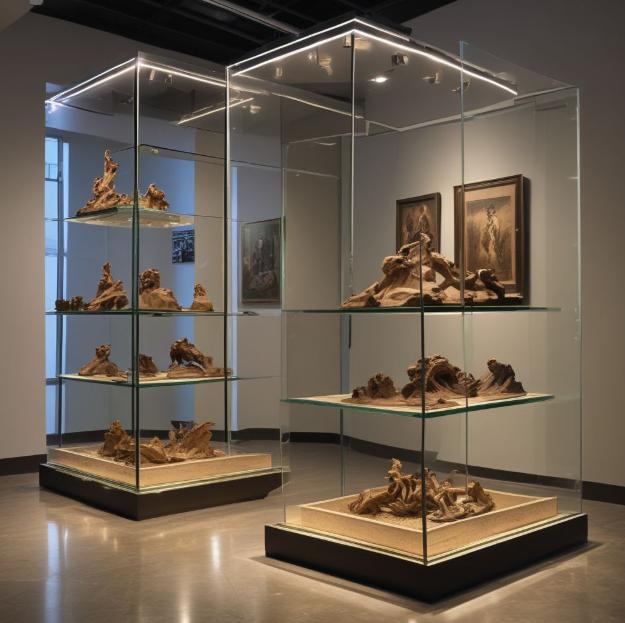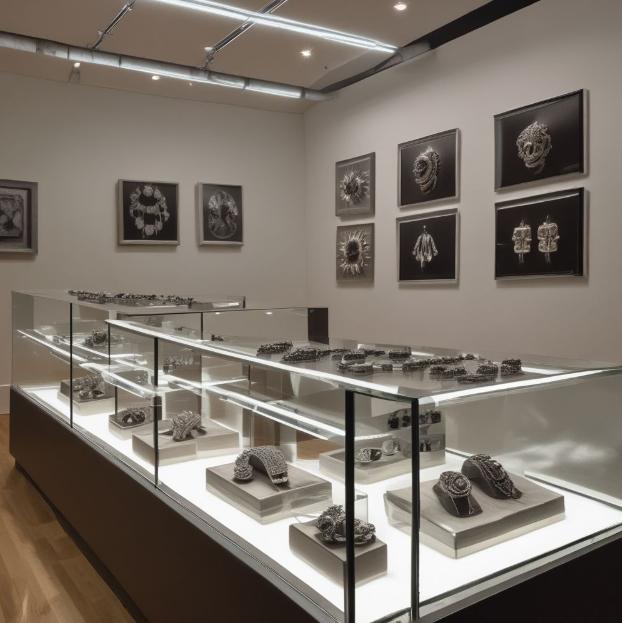1.Introduction: Why Choose Magnetic Track Lighting for Your Display?
Magnetic track lighting presents a compelling solution for display lighting, offering distinct advantages over traditional methods. Its flexibility is paramount, allowing for easy repositioning of lights as displays evolve. The ability to adapt is essential in dynamic settings such as retail stores or exhibition events. The simple streamlined design complements many styles and improves the presentation as a whole without drawing attention away from the objects on display. LED technology makes energy efficiency possible which lowers operating costs and the impact on the environment—two important factors for contemporary organizations and businesses. LED jewelry lighting emphasizes brilliance and sparkle in jewelry, while museum lighting delicately controls museum exhibits without damaging artifacts. Also, LED display lighting prevents glare in eyewear while highlighting frame details. For displaying priceless and delicate objects magnetic track lighting is the perfect option due to its versatility beauty and effectiveness.
2.Step-by-Step Guide to Installing Magnetic Track Lighting
Installing magnetic track lighting involves several key steps. First, gather necessary tools and materials: track sections, connectors (I, L, T types), end caps, a power supply (driver), light fixtures, screws, anchors, a drill, screwdriver, measuring tape, pencil, wire strippers, connectors, and a voltage tester. Begin by planning your layout, measuring the desired track length and marking mounting points. Securely mount the track sections using screws and anchors, ensuring they are level. Connect the sections using appropriate connectors to create your desired configuration. Next, wire the power supply according to the manufacturer’s instructions, ensuring power is off. Attach the magnetic light fixtures to the track; they will snap into place. Finally, test the system, adjusting fixture positions as needed. This process, while requiring some basic tools and skills, is relatively straightforward and allows for a customized lighting solution.
3. Choosing the Right Track Configuration for Your Display
Selecting the right track configuration is essential for maximizing the effectiveness of your lighting system. Single-circuit systems offer simple control, with all lights operating together from a single switch or dimmer. This is suitable for basic, uniform lighting needs. Dual-circuit systems offer greater flexibility, allowing independent control of different light groups on the same track. This is ideal for highlighting specific display areas or creating distinct lighting zones. Choosing the right connectors is also crucial. I-connectors create straight lines of track, L-connectors form 90-degree corners, and T-connectors create three-way intersections. Consider the shape and size of your display area when planning your layout. A straight line might suffice for a linear display, while a more complex configuration with corners may be required for larger or more intricate setups.
4. Best Practices for Positioning and Spacing Track Lights
Proper positioning and spacing of track lights are crucial for achieving balanced and effective showcase lighting. The distance between lights depends on fixture type, ceiling height, and desired effect. Closer spacing creates a more even, diffused light, minimizing shadows. Wider spacing creates more dramatic highlights and shadows. Avoid concentrating all lights in one area; distribute them evenly along the track for consistent illumination. Consider the height and depth of displayed items. While lights placed farther back may work better for deeper displays taller objects might need more concentrated lighting from above. A balanced and aesthetically pleasing lighting design that successfully displays your products without harsh shadows or overly bright areas is the aim. Giving careful thought to these elements will greatly improve LED display showcase lighting presentation.
5. Adjusting Magnetic Track Lights for Optimal Lighting Effects
The adjustability of magnetic track lighting is a key advantage, allowing for precise control over the lighting scheme. Spotlights offer a focused beam, ideal for accentuating specific details and creating dramatic highlights. By adjusting the angle and direction, you can precisely target the light. Floodlights provide a wider, more diffused light, suitable for general illumination or creating a soft, even background. Combining spotlights and floodlights allows for layered lighting, creating depth and visual interest. When highlighting specific display items, use spotlights to draw attention to key features. Experiment with different angles to create shadows and enhance textures. Consider using different color temperatures to enhance the appearance of various materials. Warmer light is ideal for wood and fabrics, while cooler light enhances metals and gemstones.
6. Ensuring Energy Efficiency and Long Lifespan
The longevity and energy efficiency of magnetic track lighting systems are greatly enhanced by LED technology. LEDs lower operating costs because they use a lot less energy than conventional bulbs. Because of their extended lifespan fewer replacements are required saving money and time on maintenance. Options for dimming increase energy savings even more. In addition to lowering energy usage dimming LEDs prolongs their life. Optimizing energy use can be achieved by varying the light intensity to create different moods or match the ambient light. LED technology and dimming capabilities combine to make magnetic showcase track lighting an affordable and sustainable lighting option. This helps make display lighting more environmentally friendly as well.
7. Regular Maintenance and Safety Tips for Magnetic Track Lighting
The longevity and best performance of your magnetic track lighting system depend on routine maintenance. Dust the tracks and fixtures on a regular basis with a gentle dry cloth to avoid dust accumulation which can lower light output. Use a mild detergent and a slightly moist cloth to remove more difficult-to-remove dirt. Steer clear of abrasive cleaners and harsh chemicals. Even though these systems usually run on low voltage its still important to take basic electrical safety precautions. At the circuit breaker always turn off the power before making any repairs or modifications. Periodically check the connections and wiring for indications of deterioration. Your lighting systems dependable and secure operation depends on proper maintenance and adherence to safety regulations.
8. Conclusion: Maximizing the Impact of Your Magnetic Track Lighting System
Enhancing any display with magnetic track lighting is a flexible and efficient solution. Its adaptability energy efficiency and flexibility allow you to effortlessly create exquisite visual effects and a sophisticated atmosphere with little effort. You may create dynamic lighting scenes and adapt to changing displays with ease thanks to the lights easy repositioning and adjustment. The elegant design improves the presentation as a whole by blending in perfectly with different aesthetics. You may optimize the effect of your lighting system and give viewers an eye-catching and captivating experience by following the best practices described in this guide. Because of this magnetic track lighting is a useful tool for highlighting goods artifacts or anything else you want to draw attention to.
External links:
- https://en.wikipedia.org/wiki/Track_lighting
- https://books.google.com.ph/books?id=bAEAAAAAMBAJ&dq=%22track+lighting%22&pg=PA75&redir_esc=y#v=onepage&q=%22track%20lighting%22&f=false
- https://web.archive.org/web/20200807150227/https://www.alconlighting.com/blog/home/history-function-track-lighting/
- https://www.quora.com/What-are-the-benefits-of-using-LED-track-lights-for-modern-lighting-solutions
Post time: Jan-13-2025


